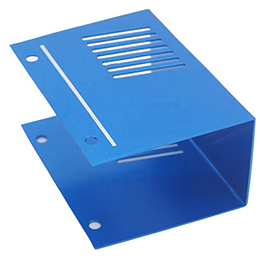Innovations and Best Practices in Custom Sheet Metal Bending and Stainless Steel Stamping Parts
2024-07-11
Introduction
The manufacturing landscape is continually evolving, driven by innovations in technology and best practices. Custom sheet metal bending and stainless steel stamping parts are no exception. In this blog, we'll delve into the latest advancements and best practices in these critical manufacturing processes, highlighting how they contribute to producing superior components.
Innovations in Custom Sheet Metal Bending
Recent advancements in custom sheet metal bending have revolutionized the industry, enhancing precision, efficiency, and versatility. Here are some key innovations:
1. Automated Bending Machines: Modern press brakes equipped with CNC (Computer Numerical Control) technology have transformed sheet metal bending. These machines offer unparalleled precision, repeatability, and speed, reducing production time and minimizing errors.
2. Advanced CAD/CAM Software: The integration of advanced CAD (Computer-Aided Design) and CAM (Computer-Aided Manufacturing) software allows for seamless design-to-production workflows. Engineers can simulate bends, optimize designs, and generate accurate toolpaths, ensuring that the final parts meet exact specifications.
3. Robotic Bending Cells: Automation is becoming increasingly prevalent in sheet metal fabrication. Robotic bending cells can handle complex bending operations with minimal human intervention, enhancing productivity and consistency.
4. High-Strength Materials: The development of high-strength stainless steels has expanded the possibilities of custom sheet metal bending. These materials offer improved mechanical properties, enabling the production of lightweight yet robust components.
Best Practices in Custom Sheet Metal Bending
Adhering to best practices is essential for achieving optimal results in custom sheet metal bending. Here are some key considerations:
1. Material Knowledge: Understanding the properties of stainless steel, such as its ductility, yield strength, and work-hardening characteristics, is crucial for successful bending operations.
2. Tooling Selection: Choosing the right tooling, including dies and punches, is vital for achieving precise bends. Regular maintenance and calibration of tooling ensure consistent performance.
3. Bend Allowances and Tolerances: Accurately calculating bend allowances and tolerances is essential to account for material deformation and ensure that the final dimensions match the design.
4. Quality Control: Implementing rigorous quality control measures, including in-process inspections and final part verification, helps maintain high standards and reduces the risk of defects.
Innovations in Stainless Steel Stamping
Stainless steel stamping has also seen significant advancements, driven by the need for higher efficiency and precision. Here are some notable innovations:
1. Progressive Die Stamping: Progressive die stamping involves multiple stations within a single die, each performing a different operation. This method allows for continuous production of complex parts with minimal handling.
2. Servo-Driven Presses: Servo-driven presses offer precise control over the stamping process, enabling intricate and high-speed operations. These presses provide superior accuracy and energy efficiency compared to traditional mechanical presses.
3. Laser-Assisted Stamping: The integration of laser technology in stamping processes allows for enhanced precision and flexibility. Laser cutting and engraving can be combined with traditional stamping to create intricate designs and fine details.
4. Material Coatings: Advances in material coatings, such as anti-galling and lubrication coatings, reduce friction and wear during stamping operations, extending tool life and improving part quality.
Best Practices in Stainless Steel Stamping
To achieve optimal results in stainless steel stamping, manufacturers should follow these best practices:
1. Tool Design and Maintenance: Designing robust tools and performing regular maintenance is crucial for consistent part quality and extended tool life.
2. Process Optimization: Continuously analyzing and optimizing the stamping process helps identify areas for improvement, reducing cycle times and enhancing efficiency.
3. Material Selection: Choosing the appropriate stainless steel grade based on the part's requirements ensures the best balance of strength, corrosion resistance, and formability.
4. Quality Assurance: Implementing comprehensive quality assurance protocols, including statistical process control (SPC) and automated inspection systems, helps maintain high standards and detect defects early.
Conclusion
Innovations and best practices in custom sheet metal bending and stainless steel stamping parts are driving the industry forward, enabling manufacturers to produce superior components with greater efficiency and precision. By staying abreast of the latest advancements and adhering to best practices, companies can achieve higher productivity, improved quality, and a competitive edge in the market. Whether you're involved in aerospace, automotive, or any other industry, embracing these innovations can elevate your manufacturing capabilities.



